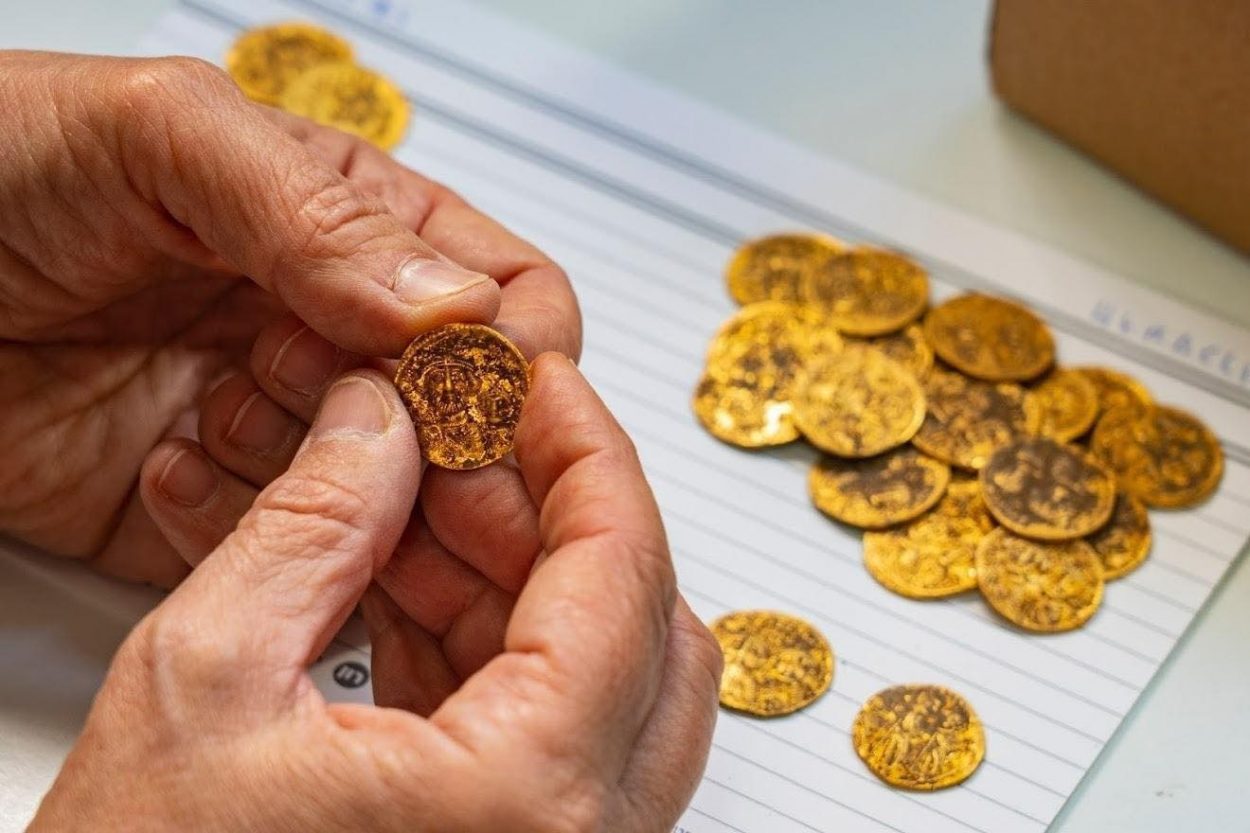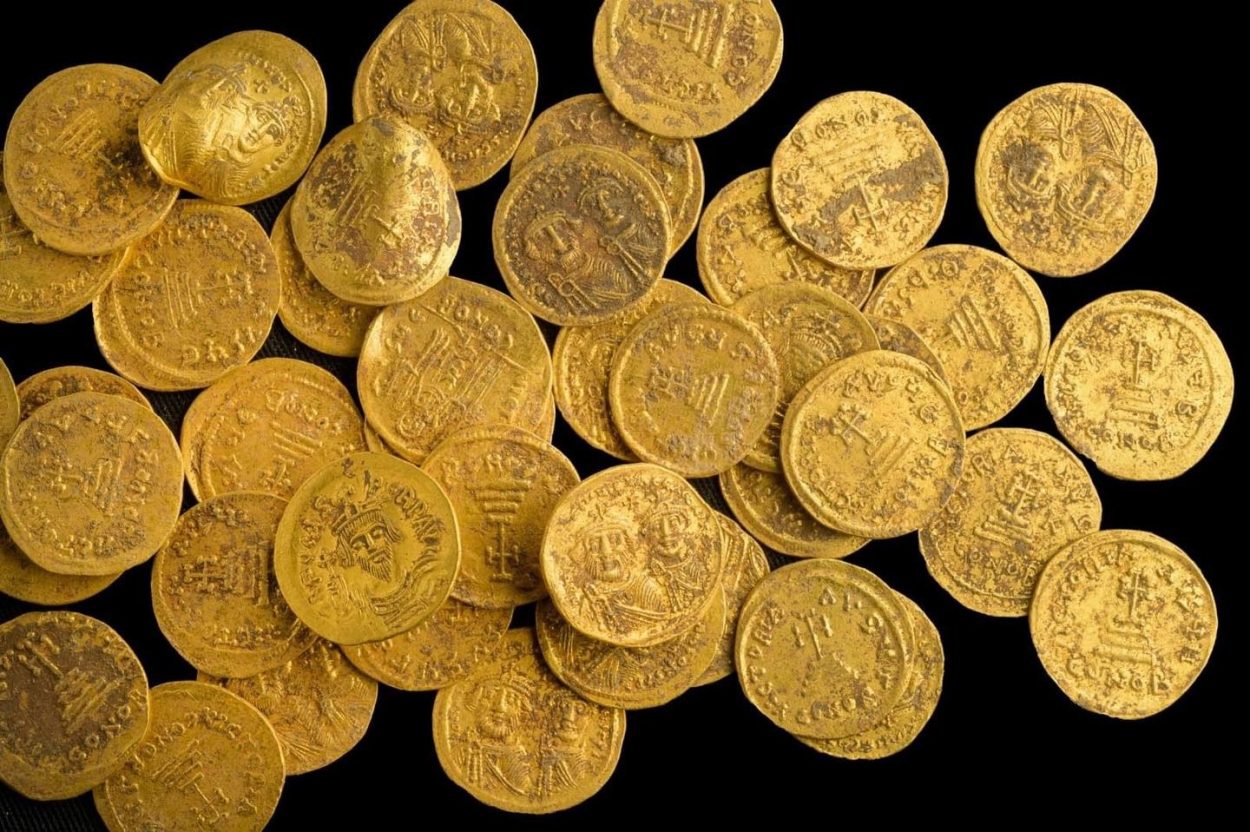Archaeologists from the Israel Antiquities Authority (IAA) have uncovered a hoard of gold coins at the ancient city of Paneas.
Paneas, later known as Banias, is located in the Golan Heights near a natural spring at the foot of Mount Hermon in present-day Israel.
Archaeological evidence suggests that the site was first established by Canaanites, who dedicated a shrine to the god Baal.
Paneas was first mentioned during the Hellenistic period in the context of the Battle of Panium, fought around 200–198 BC, when the name of the region was described by Pliny, calling it Panion, and the city as Paneas. Both names were derived from Pan, the god of the wild and companion of the nymphs in Greek mythology.

Paneas reached its peak in the Early Roman period, when Herod the Great, and his son Philip II, rebuilt the city and named it Caesarea Philippi, in honour of the Roman Emperor Augustus.
In the 5th century AD, following the division of the Roman Empire, the city was part of the Eastern (later Byzantine) Empire, but was lost to the Arab conquest of the Levant in the 7th century AD.
Excavations by archaeologists from the IAA uncovered a hoard consisting of 44 solidus gold coins, a highly pure gold coin issued in the Late Roman Empire and Byzantine Empire, first introduced by Emperor Constantine (AD 306 – 337).
An examination has identified that some of the coins depict the Byzantine Emperor Phocas (AD 602–610) and Emperor Heraclius (AD 610–641), with the latter identification suggesting that the coins were deposited during the time of the Muslim Conquest of Byzantine Palestine in AD 635.
Eli Escusido, Director of the Israel Antiquities Authority, said: “The coin hoard is an extremely significant archaeological find as it dates from an important transitional period in the history of the city of Paneas and the entire region of the Levant. The Israel Antiquities Authority, together with the National Parks Authority, will work together to exhibit the treasure to the public.”
Header Image Credit : IAA







